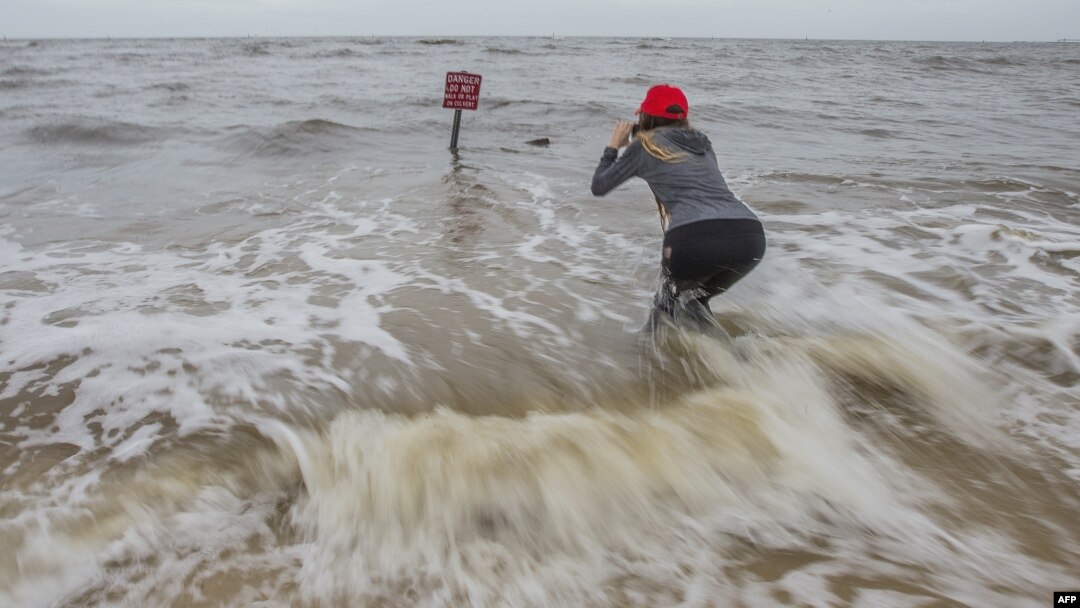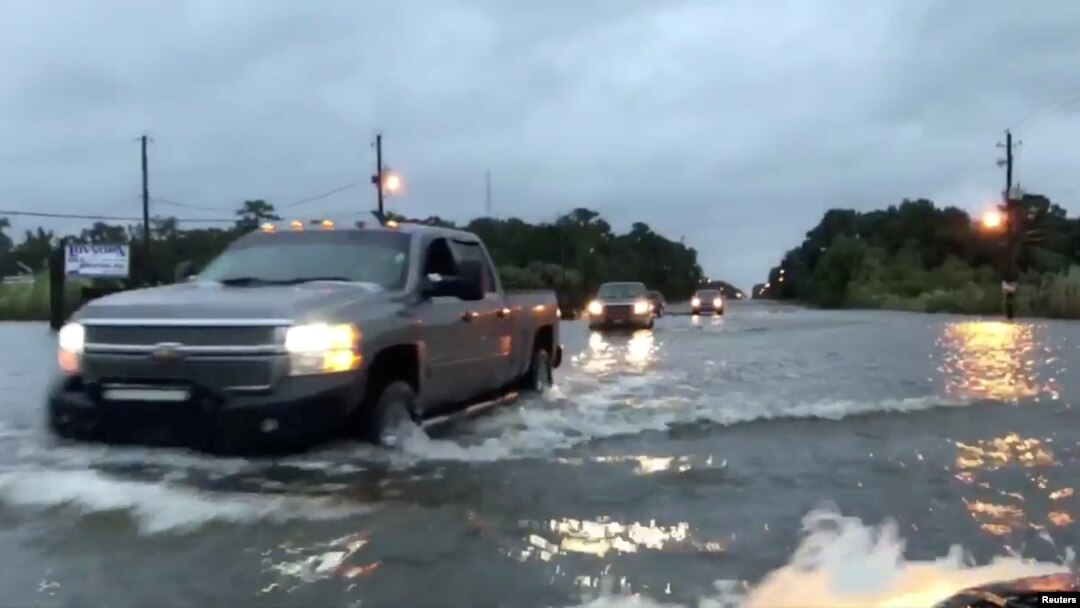Hurricane Nate made its second landfall early Sunday morning near Biloxi, Mississippi, the first hurricane since Hurricane Katrina in 2005 to make landfall in the state.
Hours earlier, Nate swept ashore along the southeastern Louisiana coast near the mouth of the Mississippi River, then continued northeast back out over the Gulf of Mexico before coming ashore again.
The National Hurricane Center said Nate is moving with maximum sustained winds of 140 kilometers per hour (87 mph), but it weakened later Sunday to a tropical storm as it moved inland, the U.S. National Hurricane Center said.
At one point, Nate’s eye move over Keesler Air Force Base, where the National Hurricane Center’s hurricane hunter planes are kept, the center said.
Nate’s powerful winds pushed water onto roads and its winds knocked out power to homes and business. But Nate didn’t have the intensity of other storms this hurricane season. No deaths or injuries were immediately reported.
As the midnight high tide approached in Biloxi, a storm surge from Nate pushed over the beachfront highway of U.S. 90 onto the peninsula that makes up the city’s eastern edge. It flooded the parking structure of the Golden Nugget casino, which is closest to the peninsula’s tip. Water kept going several blocks deep into the area.
“It kind of surprised us,” Mike Kovacevich, who lives two blocks north of U.S. 90, told Biloxi officials on their Facebook page. “We didn’t expect to be this deep. It come in pretty good — a lot of water.”
Pascagoula also reported that storm surge flooded downtown streets in that coastal city.
Thousands were without power in southern Mississippi. Outages were mostly concentrated on the eastern half of the state’s narrow coastal strip, in Harrison, Jackson and George counties.
Nate will move on over Mississippi and across the Tennessee Valley and the central Appalachian Mountains through Monday, according to the hurricane center.

Hannah Jacole Powell-Yost takes photos of a danger sign in the Gulf surf in Gulfport, Miss., as Hurricane Nate approached the Mississippi Gulf Coast, Oct. 7, 2017.
The city of New Orleans flooded by Katrina in 2005, had been bracing for the onset of this storm, but the city was spared a direct hit. Local news coverage said the hurricane warning for New Orleans had been lifted, and the sea level Louisiana city is now under a tropical storm warning.
Nate is reported to be moving at a fast clip (31 kph, 20 mph), which could help minimize damage in coastal areas and the cities and towns it passes over.
Tree-trimming trucks head into Biloxi, Miss., which was under a hurricane warning as Hurricane Nate approached the Mississippi Gulf Coast, Oct. 7, 2017.
Still dangerous
Local officials urged residents of those areas to stay inside until the storm passed. New Orleans Mayor Mitch Landrieu told his constituents and the tourists visiting New Orleans to take caution.
“The storm is on us,” he said. Despite Nate’s weakening, he reminded them a lower-category storm could still be dangerous, and this one was not wasting any time.
“It’s gonna hit you hard, it’s gonna hit you fast,” he said.
Residents in parts of Louisiana’s coastal St. Bernard Parish, east of New Orleans, were ordered to evacuate Friday in anticipation of Nate’s arrival.
Haley Sensebe, left, and Bernard Oser board up their home in Violet, La., in preparation for Hurricane Nate, expected to make landfall on the Gulf Coast, Oct. 7, 2017.
Major shipping ports across the central U.S. Gulf Coast were closed Saturday as the storm intensified amid expected storm surges of up to 9 feet.
States of emergency were declared in Louisiana, Mississippi and Alabama. Officials issued evacuation orders in low-lying areas of those states and announced shelters are available for anyone who needs them.
President Donald Trump issued an emergency declaration allowing federal aid to be made available to help mitigate the storm’s impact.
Earlier this week, Nate, then a tropical storm, claimed at least 25 lives as it moved across Central America.
People look at a highway, that connects with the south of the country, collapsed by Tropical Storm Nate in Casa Mata, Costa Rica, Oct. 6, 2017.


